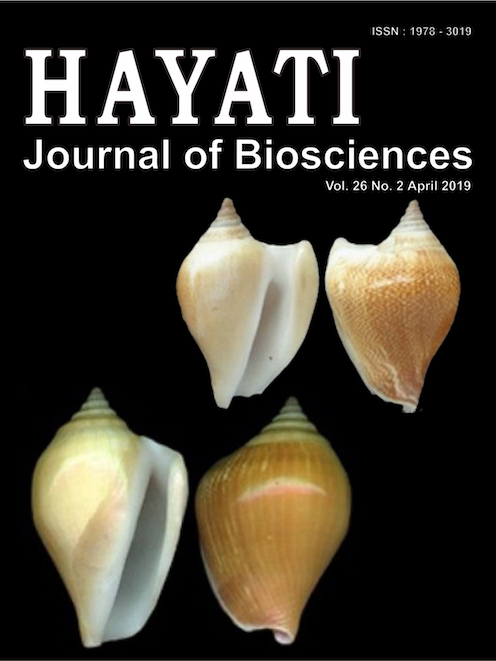Biodegradation of 1,1,1-Trichloro-2,2-bis (4-chlorophenyl) ethane (DDT) by Mixed Cultures of White-Rot Fungus Ganoderma lingzhi and Bacterium Pseudomonas aeruginosa
Abstract
This study investigated the biodegradation of 1,1,1-trichloro-2,2-bis (4-chlorophenyl) ethane (DDT) by mixed cultures white-rot fungus Ganoderma lingzhi BMC 9057 and bacteria Pseudomonas aeruginosa. Cultures bacteria P. aeruginosa with various volumes 1, 3, 5, 7, and 10 ml (1 ml ≈ 1.53 x 109 bacteria cells/ml cultures) was added into 10 ml G. lingzhi cultures for degrading DDT. After 7 d incubation, DDT was degraded about 100% with addition of 5, 7, and 10 ml of P. aeruginosa culture into G. lingzhi. Two metabolites; 1,1-dichloro-2,2-bis (4-chlorophenyl) ethane (DDD) and 1-chloro,2-2-bis (4-chlorophenyl) ethylene (DDMU) were detected from mixed cultures G. lingzhi and P. aeruginosa as metabolite products of DDT. This research indicated that mixed cultures of whiterot fungus G. lingzhi and P. aeruginosa could be used to degrade DDT.Downloads
HAYATI J Biosci is an open access journal and the article's license is CC-BY-NC. This license lets others distribute, remix, tweak, and build upon author's work, as long as they credit the original creation. Authors retain copyright and grant the journal/publisher non exclusive publishing rights with the work simultaneously licensed under a https://creativecommons.org/

























.png) IPB University
IPB University Department of Biology
Department of Biology The Indonesian Biological Society
The Indonesian Biological Society 

